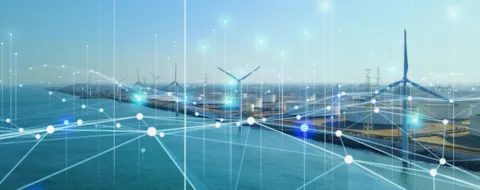It’s time to address FERC Order 2222
By: Pooja Shah, Senior Consultant, Energy Storage, DNV
Our nation’s electrical grid, saddled with aging and overstressed infrastructure, needs a significant transformation to withstand the more severe and frequent climate events that are increasingly affecting the U.S. The grid in many parts of the U.S. has been impacted by hurricanes, wildfires, winter storms, thunderstorms, and other extreme weather events, leading to outages. This has increased the need for renewable energy integration, especially in the form of distributed energy resources (DERs), which have remained largely untapped so far, in part because as they are unable to access the wholesale markets.
DERs such as microgrids, rooftop solar, batteries, smart inverters, electric vehicles (EVs) and energy-smart devices that are generally located closer to the load (i.e., are decentralized) can provide a variety of benefits to the grid such as emergency demand response, load shifting, frequency response, voltage/Var, and peak shaving among many others. More broadly, DERs can contribute to greater grid resilience, enhanced efficiency in energy usage, and could lower carbon emissions, enabling states to meet their decarbonization goals.
Currently, DERs participate in wholesale and retail markets almost exclusively as emergency capacity through demand response programs. This narrow scope limits the opportunities for customers to leverage the available free capacity of their on-site resources even when it might significantly benefit the grid. To unlock a wider range of benefits, DERs need to be able to participate, either individually or in aggregate, in a way that maximizes value and generates revenue to finance construction and operation.
Recognizing the falling costs, maturing technology and zero to low carbon nature of DERs, in September 2021 the Federal Energy Regulatory Commission (FERC) issued its landmark Order No. 2222 to open organized wholesale markets to aggregations of DERs. This order requires the development of comprehensive plans by regional transmission organizations (RTOs) and independent system operators (ISOs) in the to provide DERs access to wholesale markets.
All RTOs and ISOs are currently in the process of developing their implementation plans or have already filed them for FERC’s review. California grid operator (CAISO) and New York grid operator (NYISO) were among the first to file, followed by ISO New England and PJM. CAISO and NYISO, which serve more the DER-friendly states of California and New York, have proposed implementation dates in Q4 of 2022. Since these states have already been working on integrating DERs for a while, they’ve proposed changes to their existing implementation plans to ensure that their programs are compliant with all of FERC Order No. 2222’s directives.
Of note recently, PJM—the largest U.S. grid operator—filed a plan on February 1st at FERC establishing a framework for aggregated DERs to take part in the grid operator's energy, capacity and ancillary services markets starting in 2026. PJM's proposal adopts a "DER Aggregator Participation Model" (DER Model), which defines a new entity—the "DER Aggregator"—to participate in PJM's markets along with the following key elements:
- Newly defined terms associated with the participation model including “DER Aggregator” (the Market Participant and PJM Member), who participates in PJM’s energy, capacity, and/or ancillary services markets using a “DER Aggregation Resource” (the “resource” interfacing directly with PJM market systems for purposes of providing energy and ancillary services), which is comprised of at least one “Component DER” (the underlying DER device(s)
Per the filing, DER Aggregation Resources must be capable of satisfying a minimum energy and/or ancillary services market offer of 100 kW, and individual Component DER may not exceed 5 MW.
*Source link: https://pjm.com/directory/etariff/FercDockets/6522/20220201-er22-962-000.pdf
Other key elements in the filing included:
- Enabling retail and wholesale participation, while preventing double-counting
- Energy market self-scheduling
- Balanced metering and telemetry requirements
PJM also requested an extended implementation date in recognition of the need to plan and budget for several software, cybersecurity, and evolving grid modernization efforts to support the DER model.
Midcontinent Independent System Operator (MISO) also put forth a proposal recently that is expected to ease a backlog of proposed renewable energy projects, but it too pushed the implementation date out to 2030 stating the need for collaboration across jurisdictions, development of new frameworks, and necessary software updates.
All the filed plans vary in their approach and timelines to aggregating DERs into the wholesale markets due to the leeway FERC gives grid operators on how they develop and implement their framework. While FERC reviews these complex and innovative plans to ensure a balance between maximizing the value DERs bring to wholesale markets and not disrupt existing wholesale markets and state policy, one thing is certain: this is the beginning of innovation, new opportunities, and challenges in grid modernization.
As distributed assets begin providing a diverse set of critical grid services, the need for assurance on performance, reliability, interoperability, and security of these platform increases. DNV’s experts work with investors, independent power providers, grid operators, utilities, project developers, communities, and regulators to identify, evaluate, assess, and test DER systems to ensure that they are compliant with the regulatory framework and can integrate seamlessly into today’s grid, while planning for tomorrow.
If you are a solution provider interested in an independent technology review of your product or an adopter exploring new opportunities enabled through this regulation, reach out to speak to one of our experts today.
4/5/2022 3:00:00 PM
